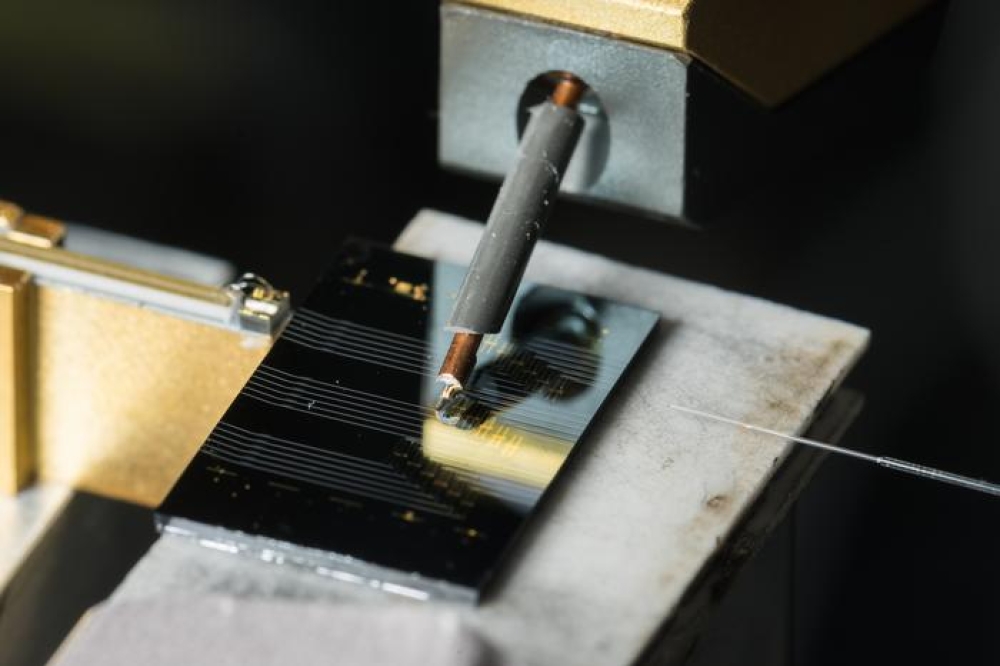A new approach for on-chip frequency comb generators

Scientists have reported a simplified method of creating microcomb lasers, which they say overcomes previous challenges, resulting in lower power demands, lower costs, high tuneability, and a turnkey operation
Light measurement devices called optical frequency combs have revolutionised metrology, spectroscopy, atomic clocks, and other applications. Yet challenges with developing frequency comb generators at a microchip scale have limited their use in everyday technologies such as handheld electronics.
In a study published in Nature Communications, researchers at the University of Rochester describe new microcomb lasers they have developed, which they say overcome previous limitations and feature a simple design that could open the door to a broad range of uses.
Optical frequency combs generate a spectrum of light consisting of multiple coherent beams, each tuned to a different frequency or colour, in evenly spaced distances. The resulting shape resembles the teeth on a hair comb. In recent years, scientists have been working to create miniaturised versions of this technology, or microcombs, that can fit on small chips.
But while scientists have made progress in prototyping microcombs, they have had limited success producing viable versions that can be applied in practical devices. Obstacles include low power efficiency, limited controllability, slow mechanical responses, and the need for sophisticated system pre-configuration.
A simplified approach
A team of researchers led by Qiang Lin, a professor in the University of Rochester’s Department of Electrical and Computer Engineering and at the Institute of Optics, has reported a unique approach to solve these challenges in a single device.
According to Jingwei Ling, an electrical and computer engineering PhD student in Lin’s lab and the lead author of the paper, previous approaches usually rely on a single-wavelength laser injected into a nonlinear converter that can transfer the single wavelength into multiple wavelengths, forming the optical comb.
“We eliminated the single wavelength because that’s going to degrade the system’s efficiency,” says Ling. “We instead have all the comb itself being amplified in a feedback loop inside the system, so all the wavelengths get reflected and enhanced inside a single element.”
The researchers say that the simplicity of the “all in one” microcomb laser results in lower power demands, lower costs, high tuneability, and a turnkey operation.
“It is easy to operate,” says co-author Zhengdong Gao, also an electrical and computer engineering PhD student in Lin’s lab. “The previous methods make it hard to excite the comb, but with this method we only need to switch on the power source, and we can control the comb directly.”
Hurdles remain for implementing these microcomb lasers, particularly with developing fabrication techniques to create such tiny components within the tolerances necessary for manufacturing. But the researchers are hopeful that their devices can be used for applications such as telecommunications systems and light detection and ranging (LiDAR) for autonomous vehicles.
Image credit: University of Rochester photo / J. Adam Fenster



































